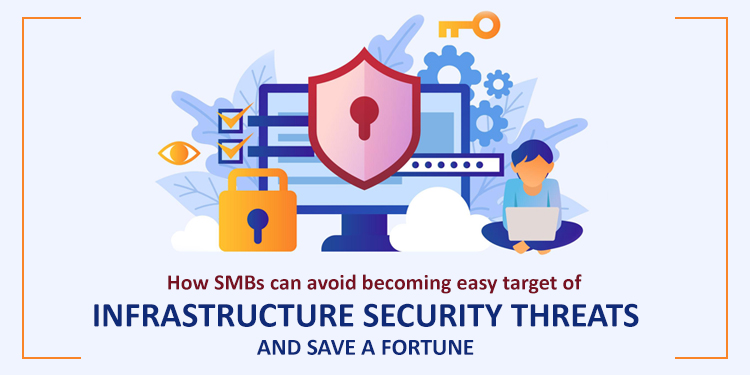
Though every business is vulnerable to security threats, there is a variance in degrees. Big companies with their large teams of IT executives, engineers, and expert security advisers can weave up added layers of security levels. Considering the history of cybercrimes, which is full of examples where these beefed up layers of large corporations have been regularly breached, one can pin down the perils that small businesses face in managing security. Since SMBs lack technical skills and specialized knowledge to properly configure IT security, they appear as low-hanging fruits to attackers. By slightly altering the code of their malware or raising the level of sophistication of their attacks, they can bypass SMBs’ safeguards without trouble. It then dawns upon us why cyber-attacks cost SMBs an average of $2.2 million.
The picture becomes more worrisome when the countermeasures that most SMBs use don’t circumvent the boundaries of antivirus and firewalls. They don’t really cut much ice, as they detect and safeguard against known threats only. New kinds of threats, which are mushrooming with each passing day, may fly under their radar. And SMBs know the “confirmed inability” of these worn out measures. A research report from the Better Business Bureau shows that 87% of SMBs are aware that they are not safe from cybercrime.
However, despite these dark clouds, SMBs can find a silver lining. With certain policies and implementations in place, they can mitigate the side effects of some- if not all- security threats. The following discourse will illuminate the ways of doing it.
A) Spear Phishing:
With an increased sophistication, phishing is still the most preferred methods used by criminals to instill malware into businesses. Its advance version, spear phishing is a form of targeted phishing where phishing emails are designed to appear to originate from someone the recipient knows and trusts – like senior management or a valued client. To make their phishing emails appear more authentic, criminals may study the social media activities of recipients. Once ransomware gains unauthentic access through these emails, it quickly locks down business computers as it spreads across the network.
Solution:
The solution to this problem needs to be two-forked- preventive as well as curative. Much of the difficulty will vanish away in smoke if SMBs can prevent spear phishing. It can be done by educating staff about the high destruction power of phishing emails and how to identify them. Similarly, businesses should be ready with backups of their critical data. As ransomware locks down files permanently (unless businesses want to cough up the ransom), backups are a crucial safeguard to recover from the hack.